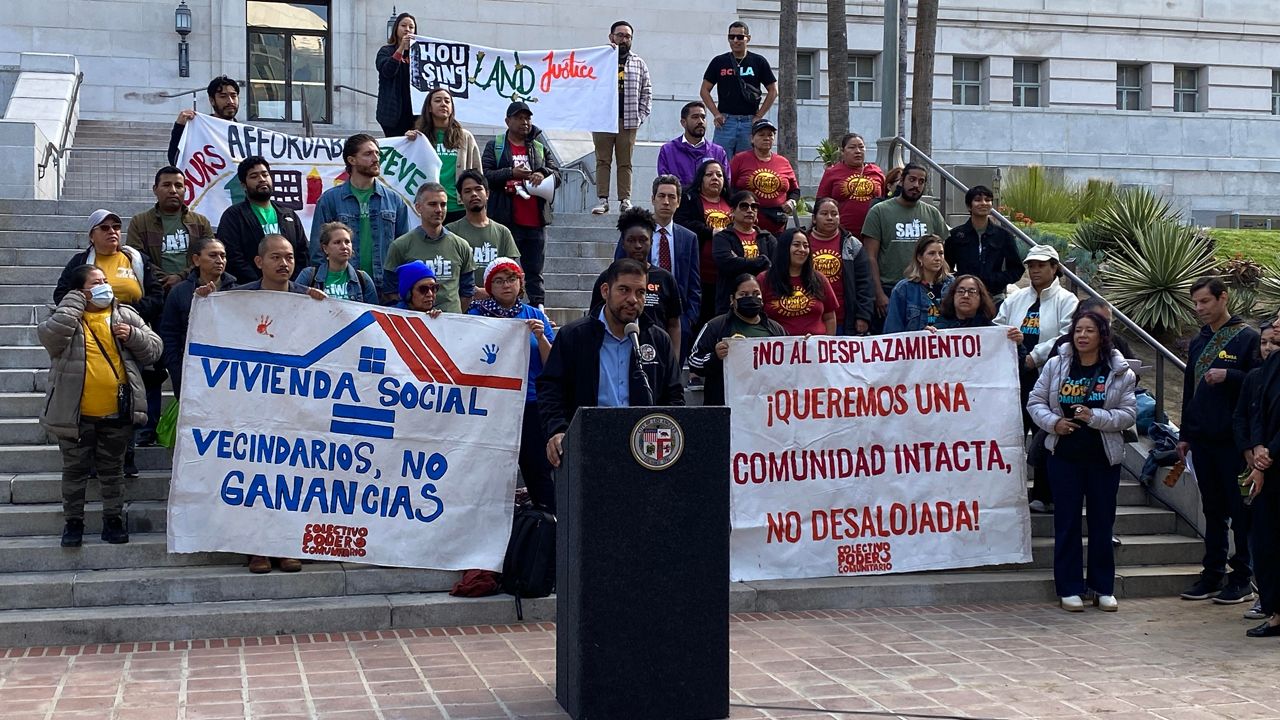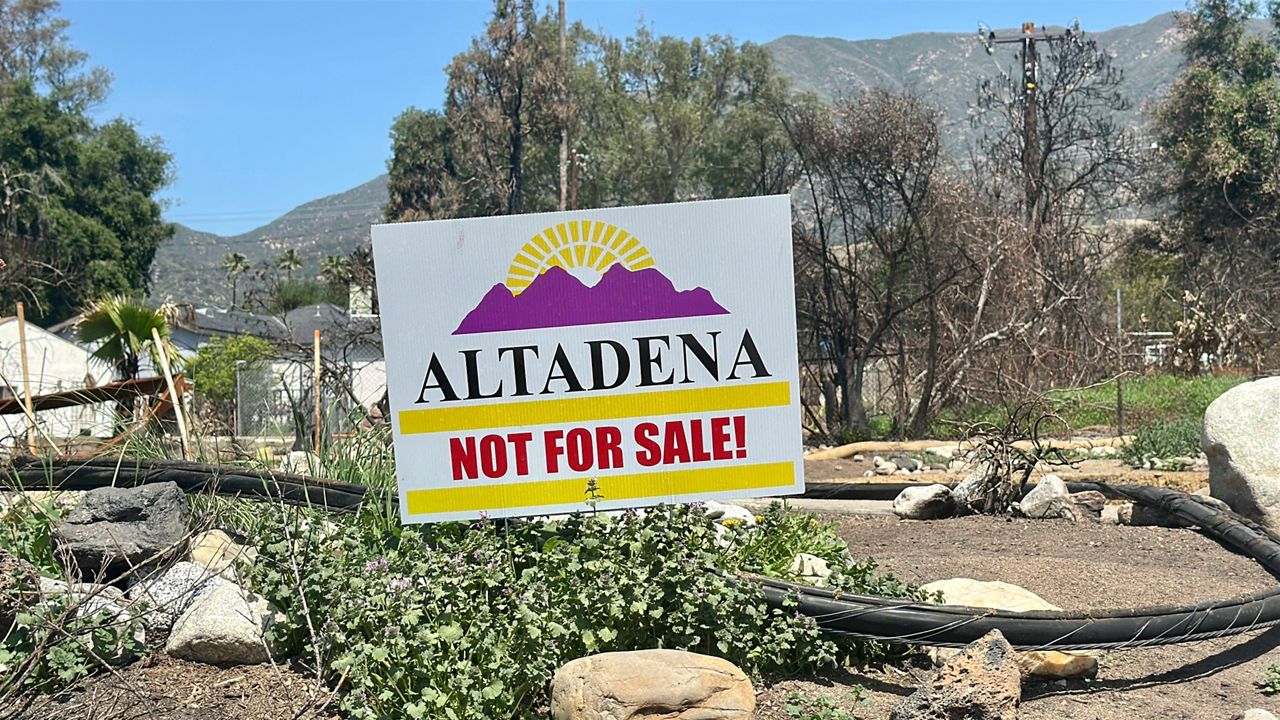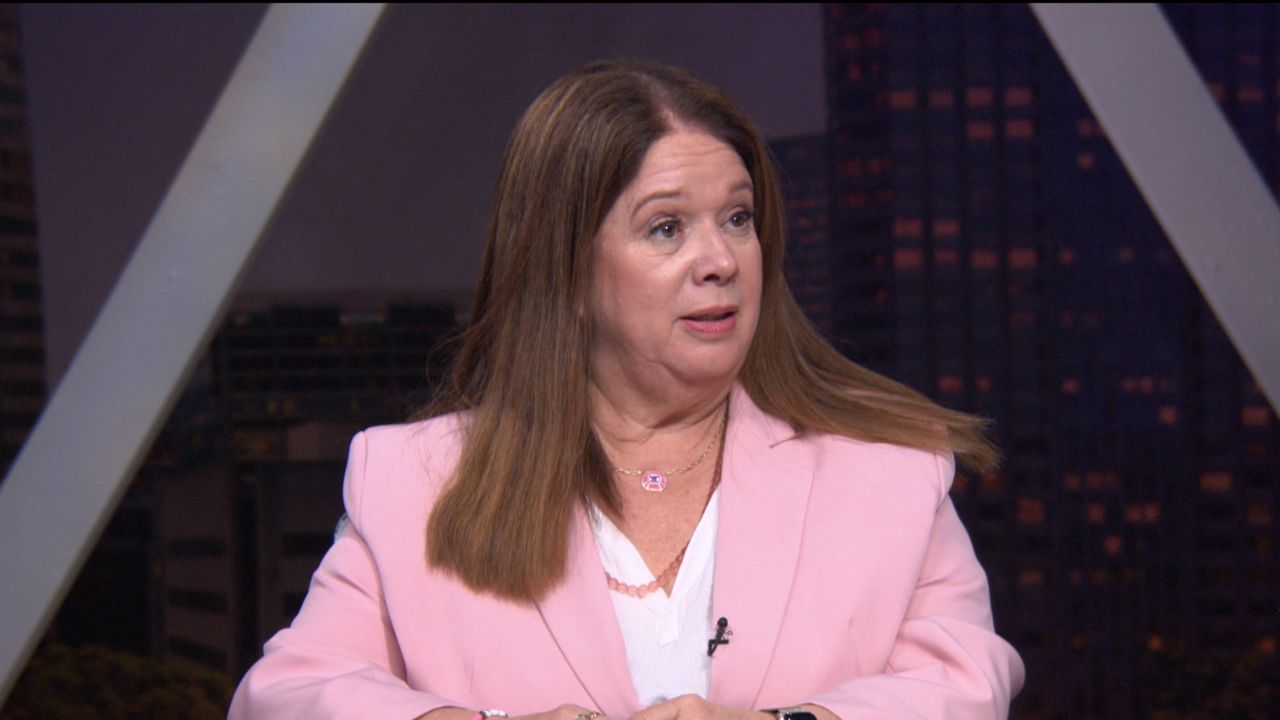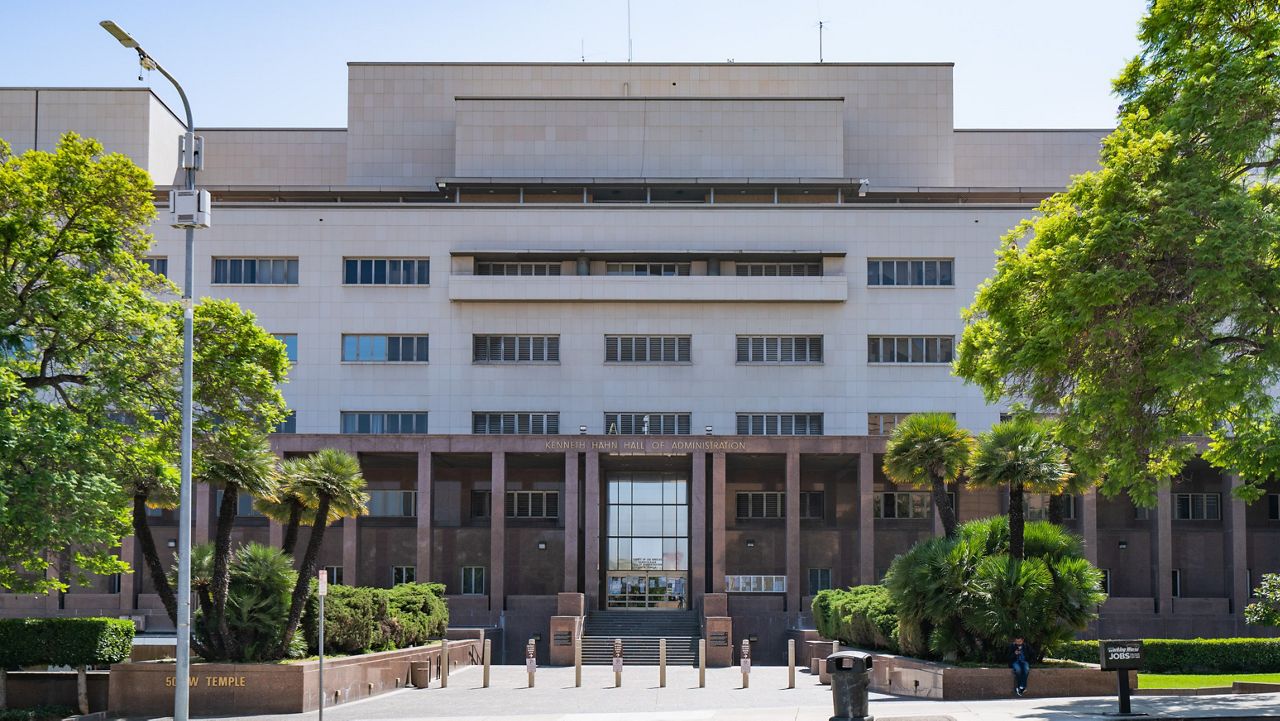LOS ANGELES — As more Angelenos struggle to pay rent amid escalating housing costs and inflation, Los Angeles activists called on the city to build community-run apartments on public land.
On Wednesday, advocates for so-called social housing rallied on the steps of City Hall to demand that LA use a portion of Measure ULA funds to build affordable housing that can never be sold to a private for-profit entity.
“Social housing is to have a roof or a home controlled by our community, where we no longer have to fight corporate landlords to have a dignified living,” Community Power Collective organizer Eva Garcia told the crowd in Spanish. “Having a roof over our heads is a human right.”
To bolster the idea, LA City Council members Eunisses Hernandez, Nithya Raman and Hugo Soto-Martinez introduced a resolution Wednesday in City Council. The resolution "recognizes the urgent need to pursue social housing as a model to ensure safe, healthy and affordable homes for all residents of Los Angeles" and directs the city support to state legislation that might lead to the development of social housing in LA.
“It’s mostly symbolic, but what we’re saying is we want publicly funded permanent affordable housing,” Soto-Martinez told Spectrum News 1, following a Renter’s Day rally organized by the ACT-LA housing coalition. “We need to rethink what housing looks like. If we look at other parts of the world, they have a lot of social housing. We don’t, so the alternative has been that it’s extremely corporatized.”
What makes social housing different from affordable housing is that the city owns the property, and the residents who live in the building have a say in how it is designed and how it works. While Amsterdam, Berlin and Vienna are among the many European cities that have robust social housing programs, and New York City trains renters to develop tenant-controlled housing, there is only one example in the city of Los Angeles: the Eco-Village co-op in Koreatown, where 40 residents “live more ecologically and more cooperatively,” according to its website.
Members of ACT-LA are calling for some of the hundreds of millions of dollars provided through the recently enacted, voter-approved Measure ULA, or mansion tax, to be channeled toward social housing projects. They also call for identifying what pieces of city-owned land could be used for such a purpose.
“We want an organization that’s going to build capacity in the city of LA so that we have co-ops across the city, not just one,“ said Roberto Garcia-Ceballas, co-director of the Boyle Heights and East Los Angeles Community Land Trust. “We want more. We want them to be designed by the people who are going to live there. And for that, we need the capacity building to move fast with the ULA funding. We don’t need the status quo.”
Sixty percent of Los Angeles households are renters, according to U.S. Census data. Of those, three out of four LA households are rent burdened, spending more than 30% of their household income on rent and utilities, according to the USC Sol Price Center for Social Innovation.
Wednesday’s rally took place almost three weeks after the city terminated emergency tenant protections put in place during the COVID-19 pandemic, which prohibited evictions for nonpayment of rent.
“We are now in a situation where the corporate landlords own most of the apartment units in the city of Los Angeles,” Soto-Martinez said. “Whenever you give Wall Street and these corporations that much power, we know exactly what happens. We see increases of rent. We see folks being pushed into the street.”










